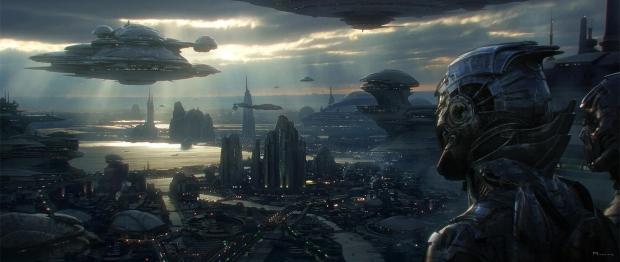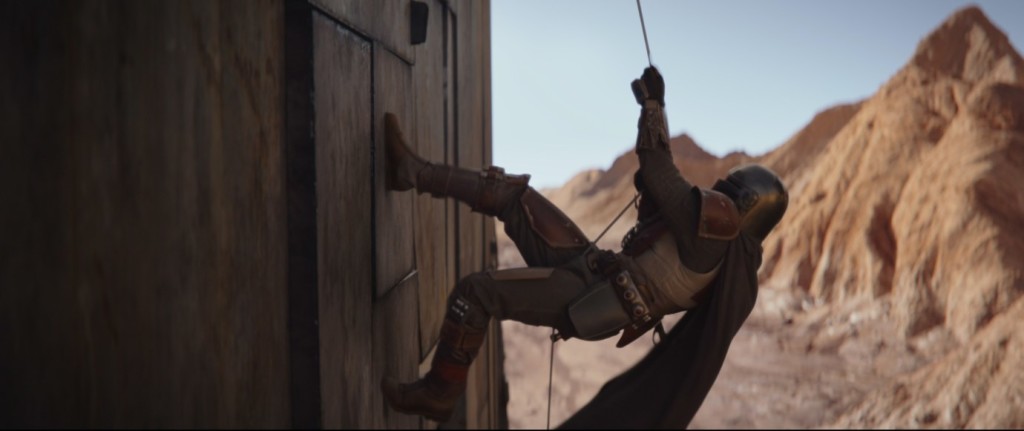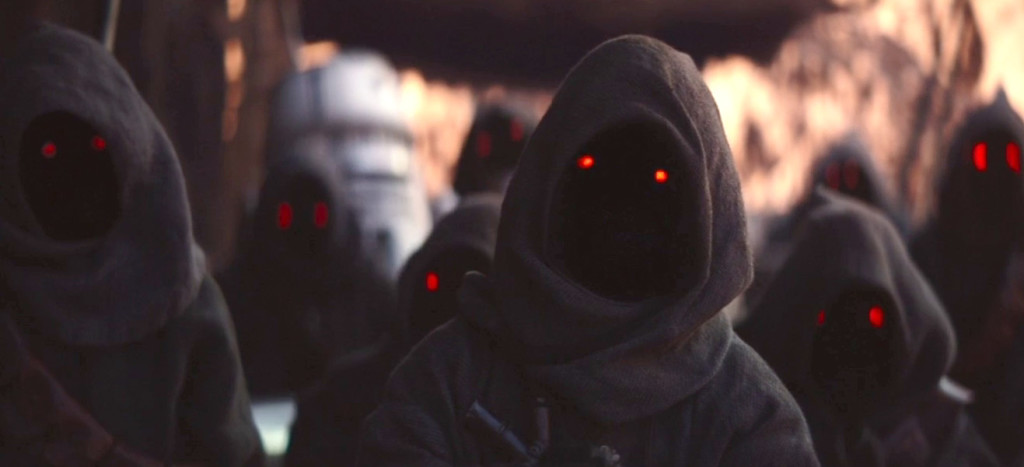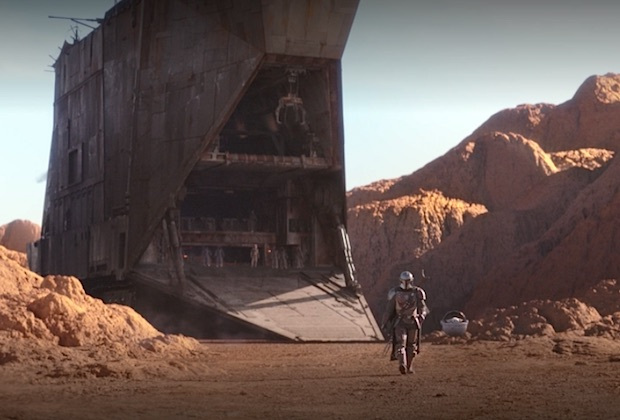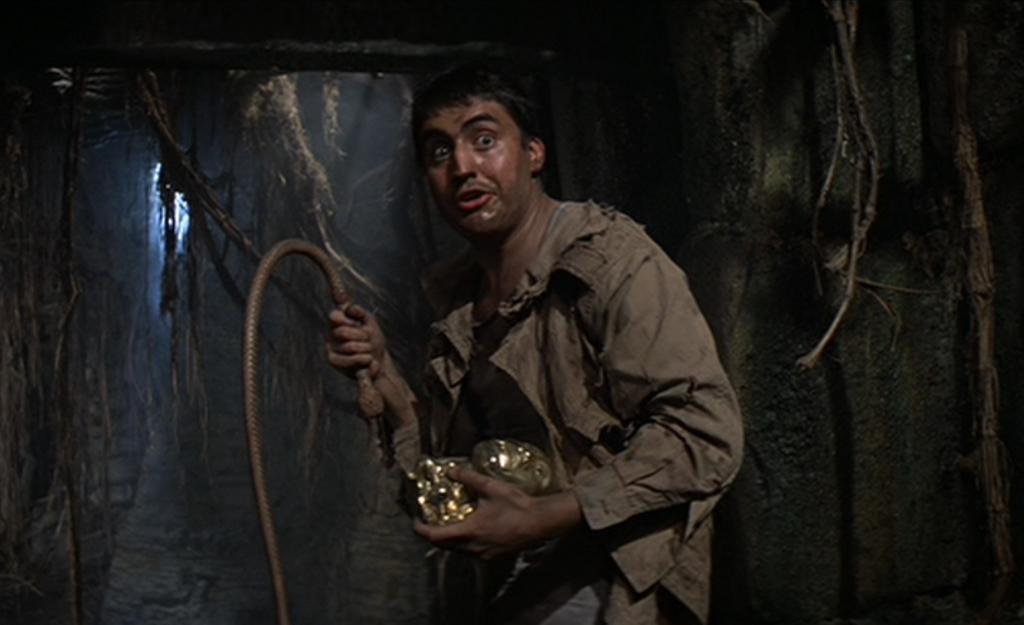Wait a minute hold on. Are you telling me you’re giving 2 IMPRESSIVES in a row? On Scriptshadow? Have you gone mad, Carson???!!
Genre: Sci-fi
Premise: (from Blood List) At the same time every morning, Scott Treder has started jumping forward in time. First a day, then two, four, eight, etc. He struggles to keep his family together and find a cure, all as his secret spreads throughout the world.
About: This script made the recent Blood List last month. The Blood List is a list of the best horror, sci-fi, and thriller scripts of the year. MGM picked up the script which is adapted from a novel that may or may not be published yet (I can’t find any info on it online).
Writer: Austin Everett (based on the novel by Joseph Eckert)
Details: 118 pages
This premise isn’t entirely new to me. I know someone else who’s working on a similar concept. I found that person’s idea full of potential as I do this one. But we both wondered what it’d look like when executed. That’s the thing with these high-concept ideas. They all sound great in theory until you start writing them, in which case you discover all sorts of challenges. Then again, that could be said for all screenplays. Either way, I’m eager to find out how this translates to the page. Let’s check it out.
47 year old biology technician Scott Treder has a simple life. He loves his wife, Amy, and his perfect 7 year old son, Lyle. There isn’t much Scott needs to worry about other than getting to work on time and helping his son with the occasional homework problem. Until one day when he’s driving his car and it disappears from underneath him, sending his body shooting down the street. Baffled, he gets to the side of the road and calls his wife, who asks where he is. She tells him he never came home last night.
After a long talk that ends in him convincing Amy he’s not having an affair, Scott goes to sleep, gets up the next morning and goes to work at Madison University. At exactly 7:52 am while working in the labs, the world speeds up and one of his co-workers asks him where he came from. That he wasn’t there a second ago. As impossible as it sounds, Scott realizes he jumped forward in time 2 days. Which means whatever’s happening has officially become a “thing.”
Scott must now convince his skeptical wife that he’s jumping forward in time so the next morning, he shows her. Scott is in the dining room, then disappears and appears 4 days later. While Amy is freaking out, Lyle is curious. He’s one of the first to recognize that the jumps are doubling each time. Scott decides to recruit some physicists at the university to help. But when he disappears and reappears 8 days later, they think he’s pulled a trick on them.
So he does it again. And this time, when he jumps 16 days, there are dozens of students and professors and scientists and media waiting. The secret has gotten out. Scott’s not sure how to handle this, but he knows he needs to start finding safe places to be when he jumps. That gets complicated when it isn’t days he’s jumping, but months, and it isn’t months he’s jumping, but years.
Amy can’t handle it. Three years after the first jump (yet only 10 days for Scott) Amy asks for a divorce. Lyle is different, though. He’s both sympathetic to his father’s plight and curious. He wants to help his father stop this. So he builds his entire life around solving the Traveller problem. Scott sees him next when he’s 13, then 19, then 27, then 51.
As Lyle changes, so does the world around us. Society has descended into a splattering of militias on the latest jump, and Scott is famous. There are believers and disbelievers alike. It takes faith to wait 24 years to see if your belief is true. But there are those who now want to kill Scott, which means he must go on the run.
There’s another more sinister truth he must face: That he may only have one more day with his son. Indeed, he makes the next jump and Lyle, a frail old man, brings Scott to his life’s work: a giant computer lab created specifically to stop the future from snatching Scott away anymore. Will it work? Or is Scott doomed to live this curse out til death?
Man , I did not expect this.
I saw the premise and I thought it was going to be one of those goofy half-baked explorations of a high-concept like that script “Furlough” that I reviewed a few years back. But boy was I wrong. Everett and Eckert go all in on this concept, opting to explore the truth of the situation.
That’s the first thing I want to bring to the attention of aspiring writers out there. If you’re going to explore a heady concept, be prepared to bring some sophistication to the script. I’m not saying there isn’t an “Independence Day” version of this idea that couldn’t do well. But by focusing instead on a father-son relationship that’s attempting to withstand 20 year long breaks, it allows the writers to cover broader universal themes.
There’s this moment where Lyle is 27 and Scott jumps and a second later, Lyle is 51 and Lyle doesn’t flinch. He’s been waiting for this moment, preparing for it, for the last 24 years. He knows he’s only got hours both to be with his father and figure out why this is happening to him. It’s a shockingly effective way of demonstrating just how little time we have with the ones we love. As a testament to this, I teared up several times during this screenplay. Cause something told you they weren’t going to be able to stop it.
That became my next question for the script. How deep are we going to go? And Everett and Eckert go deep. They expand this concept way beyond any version of the story you can imagine. Just when you think they can’t jump him forward any more, they jump him. And you’re like, whoa, when is this going to end??
There’s a more-than-obvious nod to 2001 in the story. Maybe too much. The son builds a computer suit to help Scott in future jumps and the suit is named Hal. Here’s my thing with that. We all have the movies that made us want to become screenwriters. And those movies will never stop inspiring us. But when you literally inject pieces of them into your script, you rob yourself of creating your own independent work of art. This could’ve easily been the same movie without any mention of Hal. And we wouldn’t have been reminded at so many steps of another film.
But I’m nitpicking. I really liked this a lot. It had the two most important things that a script like this needs to have. Explore the concept to its absolute limit and give me a character based relationship to care about. When you do just the first one, you get a solid movie. When you do just the second one, you get a solid character piece. When you do both, you get greatness.
I would be shocked if this didn’t snatch up one of the biggest movie stars in the world. People said Ad Astra was the last adult sci-fi movie there will ever be made on a large scale. They’re wrong. Somebody will make this movie because as soon as this gets into the hands of a Chris Pratt or a Bradley Cooper or a Robert Downey Jr, they will sign on. In fact, I’m willing to bet that the first A-lister to read this screenplay immediately attaches himself. It’s too unique of a role. And I’m also expecting this to finish top 5 on the Black List. It’s that good.
[ ] What the hell did I just read?
[ ] wasn’t for me
[ ] worth the read
[x] impressive
[ ] genius
What I learned 1: The bigger the concept, the flashier the opening needs to be. You can’t promise someone a great concept then start your script with a lame talky scene. Show us what’s awesome about your idea! Here, we get a scene where Scott is driving his car to work at approximately 27 miles per hour… and then his car just disappears. Scott momentarily continues to shoot forward in a driving position, only for his body to unravel, scrape, and then tumble forward across the concrete. What a fun way to introduce us to this concept!
What I learned 2: Avoid parentheticals if at all possible, but one time you definitely want to use them is where there’s a strong belief that a line is going to be interpreted in the opposite manner in which it’s intended. So after the 3rd time jump, Scott’s wife Amy is freaking out, marching through the living room in denial and there’s a lot of fear in the house. Lyle says, “So next time it’s eight?” Without a parenthetical, we’re going to assume that the emotion behind this line is sticking with the main emotion in the house: fear. But that’s not how Everett means the line. So it’s important he clarify it with a parenthetical. Here’s how the line reads in the script.
LYLE
(casually)
So next time it’s eight?
Welcome to The Mandalorian Teleplay Chronicles. I will be reviewing every episode of The Mandalorian’s first season with an eye towards helping writers learn TV writing. Whether the show is a breakout hit or a Jar Jar Binks level bust, we’re going to be focusing on how to become better TV writers. Here’s a link to my review of the first episode here.
Genre: Sci-fi (Half-Hour TV Drama)
Premise: After securing his bounty, The Mandalorian readies to head home. But when he finds his ship stripped, he’s forced to find and recover the parts.
About: Disney Plus’s Mandalorian release strategy is shrouded in mystery. The first episode was available 2 full hours before midnight. This latest episode was released 2 hours after midnight. Walt likes to keep us guessing, I suppose. While the first episode of The Mandalorian was directed by Dave Filoni, who was directing live-action for the first time, Episode 2 was directed by Rick Famuyiwa, who directed the underrated Sundance breakout, “Dope,” in 2015.
Writer: Jon Favreau
Details: only 30 minutes long??
***SPOILER HEAVY******SPOILER HEAVY******SPOILER HEAVY***
Baby Yoda.
Is.
The.
Most.
Genius.
Thing.
In Star Wars.
In 25 years.
Actually, I’ll go further than that. “The Child” is the best Star Wars related story since the original trilogy. As you may remember, I did not like the first episode of The Mandalorian. I was so upset, in fact, that I figured the show was doomed. But after getting some rest, I decided to treat The Mandalorian like a playoff series with your favorite team. Got blown out in Game 1. But that doesn’t mean you can’t win Game 2. And The Mandalorian didn’t just win Game 2. It obliterated the competition.
So what changed?
That’s a good question. Obviously, the directing is much better. Rick Famuyiwa understands how to construct a visual narrative much more effectively than first-timer Filoni. A good way to tell if someone knows how to direct is to see how they do in the quiet moments. Good directors can tell a story without the crutch of dialogue. And the first 10 minutes of “The Child” is silent. There’s a great shot in particular where the Mandalorian is in a rocky valley and he senses he’s about to be attacked. The camera slowly pans across his face to build tension right before the attack occurs. You never saw anything like that with Filoni, who you could tell was just putting the camera back on a wide shot in every location in a desperate attempt to make his days.
But the writing is improved as well. Episode 1 was all about setting up the character and the world and, in the process, they forgot about Rule #1 in storytelling: ENTERTAIN. “Entertain” should always be your number one priority as a screenwriter. It doesn’t matter if you write the most seamless exposition dialogue scene in the world. If you weren’t entertaining us in the process, you failed.
The first episode was also clunky. The humor was off-key (that dreadful annoying alien in the first scene). The moments they decided to focus on, like the weird horse-riding scene, were corny. And then when we got to the scene that mattered the most, they rushed through it! If anything, we should’ve been there earlier, prepped for the attack, and then slowly built to the shootout. Which brings up another oddity about this show, which is that the episodes are so short. I would’ve gladly spent another five minutes building up the danger of this town. I don’t know why they’re zipping through these moments. This is TELEVISION. Unlike movies, you’re allowed to sit in moments longer. So I’m not sure what the thinking there was other than Filoni doesn’t know how to direct OR these two episodes were actually a single episode that they chopped up.
But all of that is forgotten after watching, “The Child.” This really was the first Star Wars story since the original trilogy that I felt captured the magic of Star Wars. It follows The Mandalorian, who’s just secured his bounty (Baby Yoda), as he heads back to his ship to, presumably, return the bounty. Except when he gets there, his ship has been stripped apart by Jawas.
If you’re like me, you’re asking, “Wait, are they on Tatooine?” But it turns out they’re on Avala-7, a planet in the Outer Rim. This is where Filoni comes in handy. He knows all the planets in the galaxy and he also knows what creatures are on those planets. So I’m sure, as Favreau was writing this episode, he asked Filoni, “What kind of aliens would the Mandalorian encounter on Avala-7?” Filoni immediately shot back, “Well you know Jawas can be found on any dusty planet in the Outer Rim.”
This led to an extremely fun sequence where the Jawas hurry off in their giant sand crawler and, just like in the old Western movies, the Mandalorian hops on the “train” and tries to make his way inside, only to get attacked at every step. The best part about this sequence is that Baby Yoda is hovering along behind him, casually watching the events unfold with childlike curiosity.
After getting booted off the crawler, the Mandalorian heads back to his buddy, Nick Nolte Alien, who tells him they can barter with the Jawas. So they go to meet the Jawas, who, after several rejected trade scenarios, offer the ship parts if Mandalorian gets them “the egg.” The egg? What is the egg? Cut to a cave where a big beast most definitely lives and now we know why they’re willing to give so much for this egg. Getting it will be impossible.
The Mandalorian fights the rhinoceros-like creature, but only wins because Baby Yoda uses the force at the last second to stop it. This allows The Mandalorian to kill the beast and retrieve the egg for the Jawas…. At which point the Jawas break open the egg in celebration and start eating its gooey insides. That’s all they wanted this whole time. Was a yummy treat. It was hilarious. This allows the Mandalorian to put his ship back together and off he and Baby Yoda go. The End.
Okay! Let’s talk TV.
In the pilot episode of a television series, you’re hamstrung by the fact that you have to set up a lot of things. The good news is that when you get to the second episode, much of that weight has been lifted. You’ll still need to set up things (new characters and such) but for the most part, you’re released from this burden. What that means is that your second episode needs to be about WHY THIS SHOW IS AWESOME. Give us a great story in the second episode – something that highlights why this specific TV show concept is so great. And that’s exactly what The Mandalorian does. This second episode is ALL STORY.
For those wondering how to create a story for an episode, one of the easiest ways is to introduce a PROBLEM. Because then you have something to do for the next 45 minutes: Show your hero trying to solve the problem. Now in more conventional TV episodes, you’ll be following three main storylines. So you’ll need to come up with a problem for three different characters. But The Mandalorian is unique in that it’s only following a single character. So they only needed to come with one problem. And that problem was that he couldn’t leave the planet because his ship was stripped.
From there, it’s pretty standard storytelling procedure. Your job is to create DOUBT that the hero will achieve his goal. Favreau does this immediately when The Mandalorian runs after the sand crawler, tries to infiltrate it, only to be defeated by the Jawas, which there are too many of.
This leads to a broader discussion about heroes in stories. It tends to be more interesting when the hero isn’t superman. A lot of people went into this series believing that this Mandalorian guy was going to be bad-a$$ and take out everyone with a glance. But it hasn’t been that way. He’s not perfect. He messes up. The key factor to pay attention to here is that if he’s not perfect, there will be MORE DOUBT. And that’s what you want. Because think about it. If you know he’s going to win, how compelling is that?
And you see how this pays off when your character goes up against the bigger problems. We saw this guy lose against Jawas. 3 feet tall Jawas! So when he’s fighting the egg beast, we’re genuinely unsure what’s going to happen. And it turns out he doesn’t defeat the beast. He needs help from Baby Yoda.
That’s what I liked about Episode 2 the best – it’s Back to Basics storytelling. There’s no trickery or overly complicated nonsense. It’s straight-up Hero has a goal and encounters obstacles along the way. If you master that simple formula, you can write a lot of great TV episodes. The only difference you’re going to find if you get staffed on a “normal” show is that you’ll have to balance A, B, and C storylines. That gets trickier. But you’re essentially doing the same thing. Each of the three storylines should have a clear goal and then a number of obstacles that get in the way of achieving that goal. Also, your A story (which will follow your biggest 1 or 2 characters) will have the most amount of screen time, B story the second most amount of time, and C story, obviously, the least amount of time.
“The Child” has reinvigorated my enthusiasm for this series. What’s so great about Baby Yoda is that it’s the first Star Wars mystery nobody knows the answer to. We know Rey is either connected to nobody, Luke, the Emperor or the Solos. We know Kylo will get redeemed and probably die. The internet has kind of destroyed a lot of the fun of Star Wars in that way. But Baby Yoda has stumped them and I believe that’s a big reason why this series is so exciting. Nobody knows where it’s going to go. And that brings me back to the feelings I had between Empire and Jedi where the only way I was going to find out how this ended was to see the final movie.
And by the way. I would be ALL ONBOARD for a Rick Famuyiwa Star Wars feature. Put this guy in charge of the Kevin Feige Star Wars project and I’ll be the first to commend the choice. He did an excellent job.
[ ] What the hell did I just watch?
[ ] wasn’t for me
[ ] worth the stream
[x] impressive
[ ] genius
What I learned: Have your character fail early to create doubt later. When your character goes up against the big bad villain, we’ll be more invested if we SAW HIM FAIL EARLIER. Had the Mandalorian wasted the Jawas easily, we would’ve been too comfortable when he fought the beast. The fact that he lost increases the doubt-factor that he’ll be able to beat this thing. And fights/battles are always more compelling when we have serious doubts about our hero winning. This goes all the way back to the original Star Wars when Luke Skywalker is in that trench. We’ve just seen 10 other much more seasoned pilots die. How is this farm-hand who’s in his first battle ever going to figure it out?
A quick reminder to get those entries in for Amateur Action Showdown and Amateur Holiday Showdown. For more details on the showdowns and how to submit, go here.
Genre: Thriller
Premise: Upon landing for her business trip in a personal s@#%-storm, a woman climbs into the wrong Lyft and finds herself at the mercy of an unknown driver.
Why You Should Read: After grabbing a Lyft from the chaos that is JFK on a Friday night, the thought of “what if this wasn’t my ride” hit like a sledgehammer. Drowsy after a six-hour flight. In the dark trying to spot license plates that all look the same, maybe a number or letter off from one another. This easily could not be my ride, and if it isn’t, who is this guy driving me? Does anyone know I’m in this guy’s car, at this moment? Or am I lost, potentially forever if the driver so desires? (there was more to this WYSR but I had to cut it short for the review – too long).
Writer: Walon Costello
Details: 85 pages (this is an updated drafted from last week)
This last Amateur Showdown had some voting issues that I don’t want to get too caught up in. There were votes cast that ended up not being legit and after talking to everyone involved, it seemed like an honest misunderstanding of the rules. Still, the tally for the first (Palomino) and second (Lifted) highest voted scripts was close enough that I decided to read the first page of each to decide on which one to review.
I liked both first pages equally and therefore I had to go to secondary criteria, which was page count. “Lifted” was 86 pages and “Palomino” was 116 pages. Also, I was familiar with Walon and the strong potential of his previous script, Grisly. That’s why I went with Lifted.
With that out of the way, let’s get into the plot!
When we meet 30 year old Liz Baker, she’s landing at Denver International Airport. Seconds after she touches down, she does what everyone else does, which is turn on their phones and start checking their messages. The first text she sees is from a guy she’s hooking up with later. The second text she receives is from her husband, Jerry.
While in the shuttle to her hotel, she calls Jerry, who’s extremely mad. We quickly learn that the two have recently separated and that Jerry wants reconciliation. When Liz explains to him that that’s not going to happen, seemingly for the umpteenth time, Jerry’s anger escalates. And, at the end of the conversation, he apologizes for what he’s about to do.
Within minutes, Liz starts receiving urgent messages from everyone. It turns out Jerry has posted nude photos of Liz on her Facebook page. Liz gets dropped off at her hotel and is so overwhelmed by the situation, she doesn’t think twice about getting in a Lyft car to go meet her new man. After calling work and trying to explain the situation to her boss, Liz is already five minutes into the ride. When she senses that the driver is acting weird, she confirms their pickup details, which it turns out are wrong. This isn’t her Lyft car. That’s okay, the driver, David, says. Sometimes this happens. He’ll still bring her to her destination, the Art Hotel.
While Liz tries to manage the naked pictures fallout on her phone, David keeps interrupting her, wanting to chat. He wants to know where she’s from, what she’s doing here, and why she seems so upset. Distracted, Liz is barely able to answer his questions. The more David talks, the sketchier he sounds, so Liz downgrades Operation Naked Picture Fallout, and prioritizes Operation Who the F&*% Is This Dude? When David misses their exit, she’s convinced he’s going to kill her.
The funny thing is, he never does anything *that* bad. There are plenty of suspicious actions, but they all seem to have an explanation. For example, when she can’t seem to open her window, he proves to her the back windows are broken. So is this guy actually dangerous? Or is Liz being paranoid.
In the script’s best moment, we arrive at the hotel. It turns out David REALLY WAS just driving her there. And there’s still 30 pages to go! Liz stumbles into the hotel to meet her hot online crush, says to give her a moment to put herself together and then come meet her in their hotel room. There’s only one problem. Good old Jerry is waiting for her in the room. And now she truly is in danger.
The “stuck inside a taxi” concept is not new. It’s been around for a long time. Since ride-sharing became a thing, I’ve seen many people cover this concept from that angle as well. And that’s not to say it’s a stale idea. Being stuck in a car with any type of conflict is a compelling situation when done well. Recent Black List script Daddio comes to mind.
But the writing has to be sharp since you’ve only got two characters, a small space, and a lot of time to fill. Your plotting and dialogue have to be on point. I was looking forward to Lifted, especially after Grisly. But there were a handful of problems at the conceptual stage that kept this from meeting its potential.
First let me say that Walon’s approach to the story looked good on paper. You place this girl in a car dealing with the immediate aftermath of a failed marriage, a potentially career-ending problem, a chatty Lyft driver, and a growing suspicion that the driver is kidnapping her, and you’ve got the ingredients for a conflict-infused movie.
But too many important story choices derailed that setup.
For starters, someone posting naked selfies of a person in order to destroy their career is a 2008 plot device. It’s dated. And so, immediately, the movie felt dated. It’s like Amy Pascal notoriously buying Sex Tape 10 years after the surprise of sex tapes was a thing.
Next, we live in the immediate aftermath of the #metoo era. That means you must run every one of your script choices through that lens. Here you have a controlling ex-husband who’s saying terrible things to Liz on the phone. Then he posts naked selfies of her online. Then she gets in the car of what appears to be a psycho man who’s trying to kidnap her, all so she can go bang someone she barely knows from Tinder, and then later she’s attacked by three other men.
Sure, Liz wins in the end. But the industry is not going to favor a movie where a girl is controlled and humiliated and beaten up for 87 minutes and then fights back for the last three. But we never should’ve gotten that far in the first place because the setup should’ve been changed. You’re taking a person who something bad happens to then placing them in another situation where something bad happens to them.
That’s not the way good movie narratives work. You either want to start with someone in a good place then drop them in a bad place, or vice versa. Rarely does bad with bad and good with good work. You need the contrast. This would’ve worked better had Liz been on a high for some reason, and then slowly realizes she’s in a dangerous situation.
On top of that, her goal – to meet Tinder Guy – doesn’t make sense. And this goes back to something I constantly drill into screenwriters heads yet they keep ignoring me for some reason. I don’t know why it doesn’t register because it’s a deadly screenwriting mistake.
PUT YOURSELF IN THE HERO’S SHOES AND ASK IF THAT’S WHAT YOU’D DO.
You’ve just been publicly humiliated with naked pictures posted all across your media platforms. Your job is in danger. You are being shamed by men. Men are messaging you telling you all the things they want to do with you sexually. A) Wouldn’t you stop everything and call Facebook and everyone else until those pictures were deleted? I’m pretty sure that’s how I’d handle it. And B) this meetup seems to be purely sexual. I’m not a woman so I can’t say this for sure. But I’m guessing that you wouldn’t be in a sexy-time mood right after this happened. So I don’t know why she’s going to see this guy. It doesn’t make any sense.
I’ll give Walon credit. When it turned out David really was dropping her off at the hotel, I was shocked. I truly didn’t know where the story was going next. And that was exciting. But then Jerry arrives and he’s so “one-dimensional 80s villain,” I was pulled out of the story again. From there, the script felt like it was trying too hard to weave all of the backstory into the final payoff.
If Walon really likes this idea, here’s how I would approach it. Liz lands and messages her hookup. This time, however, Liz isn’t getting separated from her husband. She’s married. Yes, this risks making Liz unlikable but it makes her a much more interesting character. From there, no naked selfies online. A big problem at work occurs, but it’s all about work. This gives Liz something to fix while she’s in the Lyft. From there – and this is the major change – it isn’t a male driver. It’s a female driver. Here’s why I’d make that change: IT’S ALWAYS A MALE DRIVER. In every single one of these scenarios. Always always always. It’d be way more interesting if it was a female. Liz would be more trusting of a female driver. We’d be more trusting of a female driver. Which is what’ll make it all the more shocking when she turns out to be dangerous.
That’s how I would approach it anyway. Either way, good luck to Walon. I’m sure we’ll see more of his work soon on Amateur Showdown.
Script link: Lifted
[ ] What the hell did I just read?
[x] wasn’t for me
[ ] worth the read
[ ] impressive
[ ] genius
What I learned: You should always identify what makes your idea unique and draw all of your story and character ideas from that pool. Before Uber and Lyft existed, taxis were driven exclusively by men. So when writers came up with this idea back then, they naturally always had the driver be a man. With Uber and Lyft, female drivers became commonplace. Therefore, including a female driver in a movie like this immediately separates you from all the other ideas like it in the past.
Not long ago I was reading a screenplay and I noticed that all of the scenes were average to boring. But no matter how hard I tried, I couldn’t put my finger on why. It wasn’t as if the writer was making any obvious mistakes. But the scenes lacked a clear punch, specifically the ones involving dialogue.
It wasn’t until later in the day, when I’d long since finished the script, that the answer came to me. The main character wasn’t going up against any problems he couldn’t handle. The reason it was hard to identify this was that, on the surface, the obstacles were there. Our hero would need to talk his way out of a tough situation, for example. And yet, I never doubted that the hero would be able to do it.
And that introduced me to a new term: THE FALSE OBSTACLE.
Obstacles are extremely important in screenwriting. The formula you want to follow is this: Hero goes after objective + an obstacle gets in their way = he either succeeds or fails. Afterwards, you start the formula over again. And you’re doing this again and again throughout the screenplay.
However, there’s a common mistake screenwriters make when applying this formula. And not just beginner screenwriters. It can happen to any writer regardless of their level. The mistake is that the writer will create an obstacle that they already know how to get their hero out of.
In order to explain this, let’s use one of the most famous scenes ever, the scene with Indiana Jones trying to escape the cave in the opening of Raiders of the Lost Ark. There comes a moment late in the sequence where Indy reaches a pit that he isn’t able to jump across. On the other side of the pit is his assistant, who’s holding his whip. His assistant offers a trade. Toss me the gold idol and I’ll give you your whip so you can get across.
This is a common scenario for a writer to get tunnel-vision on. He believes that giving up the idol for survival is a strong enough trade-off for the audience to be okay with. So he knows how Indy is going to survive before he’s even started writing the scene. Is it good scene if they trade? It’s okay. But it’s not a true obstacle if the solution is that easy.
So what writer Lawrence Kasdan does is he has Indy toss over the idol but the assistant DOESN’T TOSS BACK THE WHIP. Now, it’s a REAL OBSTACLE. Because the writer’s lazy option is no longer available and he must figure out how Indy is going to get out of this. That’s how you want to approach obstacles. You want them to be legitimately hard to overcome and not just lip service that the audience already knows the hero can handle.
But this script I was reading wasn’t an action script. It was dialogue driven. The hero repeatedly needed things from other characters and had to convince/persuade them to get what he wanted. In some cases, his life was on the line. And yet, for some reason, the scenes weren’t compelling.
I knew they were false obstacles but because they weren’t physical, like Indy needing his whip, I didn’t know how to fix the problem
And then it hit me. The writer wasn’t seeing the scene through the other characters’ eyes. They were only seeing the scene through the hero’s eyes. When you only see a scenario through your hero’s eyes, all the dialogue you give to the other characters will be, intentional or not, crafted to make things easier for your hero.
Let’s say a fictional character named Henry has a dead body in his trunk and gets stopped by a policeman. It’s the ultimate obstacle. If Henry doesn’t convince this cop to let him go, he’s toast.
If you only write this scene through Henry’s point of view, you will write weak dialogue. You won’t make the cop as suspicious as he needs to be. You won’t have him ask tough enough questions. Chances are you won’t even know enough about this cop to understand WHAT he’d do in this scenario.
To you, the cop is a pawn who must put up enough resistance to create conflict, but not enough to make your job difficult as writer. And when you approach the scene that way, you will get a lot of false obstacle dialogue. It will never truly feel like your hero is in danger.
So here’s a hack to solve the problem. And it’s not easy. But if you want to become a better writer, this will do it.
Open a new document and write the scene FROM THE COP’S POINT OF VIEW. The cop is now YOUR HERO. The guy in the car – Henry – he’s just a guy to the cop. Have him suspect that Henry is acting skittish so he does everything in his power to figure out what he’s hiding. I guarantee – GUARANTEE – that the cop’s dialogue will improve by AT LEAST 200%. And that the scene will be a lot more intense in the process.
Afterwards, go back to the Henry scene – the one that’s actually in your script – and combine it with your new Cop scene. You’ll find that your crutch – being able to manipulate the cop’s dialogue in a way that makes it easier on your hero – is gone. The cop will be asking legitimately tough questions. He’ll be asking Henry to do things he doesn’t want to do. And while that may be scarier to write since you won’t know exactly how your hero will get out of the situation, I guarantee that your scene will be more riveting. Cause we’re not going to know how he gets out of this either. And that’s what’s exciting when you’re reading something – is the not knowing.
You can apply this to any scene with two or more characters. If your dialogue feels flat, first make sure that the basics are in place (one of the characters has a clear goal, someone else in the scene doesn’t want to give them that goal, and there are legitimate stakes involved in the hero achieving his goal) and then write the scene from the other characters’ points-of-view. If you do this for a scene and it doesn’t make the scene better? I give you full permission to come back to this post, tell me I’m an idiot, and that this was terrible advice.
But I’m confident that’s not going to happen. Now go write some great dialogue!
Genre: Drama/Comedy
Premise: The young president of a boutique publishing house must convince a crotchety old reclusive author to come out and do a promotional tour for his first book in 30 years.
About: This project was recently put together, pairing Michael Caine with Aubrey Plaza. The script was originally one of the winners in the 2015 Nicholl Fellowship Screenplay Contest. The film is being directed by newcomer Lina Roessler, who’s directed several well-received short films.
Writer: Anthony Grieco
Details: 107 pages
I was at the self checkout today, scanning my honey baked ham, when a checker came up behind me and quietly asked, “Sir, do you need a bag?” Without hesitation I blurted out, “should’ve cut the Burrg scene Baby Yoda!” The poor woman had no idea what I was talking about and slowly backed away. It goes to show just how much this opening Mandalorian episode has scarred me. So I decided to jump into a world as far away from Star Wars as possible. A script about a writer? With Aubrey Plaza attached? And no jawas. Good enough for me.
20-something Lucy Skinner recently inherited New York’s best boutique publishing house from her deceased father, who started the company 40 years ago when he discovered an unknown writer named Harris Shaw. But things are not going well for Lucy. After a series of failed serious books, she’s shifted the company focus to more juvenile fare. But their latest release, Dragons of Orion, isn’t moving any copies. Skinner needs to do something fast or she’s going to lose the company.
With the help of her assistant, tightly-wound Ben, Lucy realizes that Harris Shaw – the very gentleman responsible for the publishing house existing, is still under contract to deliver a book! It’s been 30 years since anybody’s seen the guy but a Harris Shaw novel carries some serious street cred. So off her and Ben go to Harris’s remote home, only to get screamed AND shot at.
But Lucy can’t give up. Big publishers are breathing down her neck, offering money to buy her out, and at a certain point, she’ll have to do it. When Lucy realizes Harris is in deep financial trouble himself, she plays up how a best seller can fix it all. It just so happens Harris has a finished novel. But, according to him, it’s terrible. Not to worry, Lucy says. It’s not about quality. It’s about creating buzz. And so off they go.
However, it immediately becomes clear to Lucy that Harris isn’t the best pitch man. He drinks and smokes at every book reading, touts that everything in the book is b.s., and will occasionally toss the book on the floor and start urinating on it. Luckily for Lucy, these embarrassing episodes start going viral. And Harris becomes a minor celebrity.
But they’re still not selling any books! “You have to start reading for people,” she tells him. And what parts should I read, he asks. Lucy stares back blankly. It’s clear that Lucy hasn’t even read the book. Eventually, as usually happens in these movies, Lucy and Harris find common ground and begin promoting the book properly. And the book moves up the charts. But it isn’t enough to cover all the money Harris owes. Which means Lucy must make a tough decision. Does she leave Harris to fend for himself? Or sell her publishing house and bail him out?
Best Sellers is an okay script that doesn’t quite know what movie it wants to be. Sometimes it feels like a true-to-life independent film that’s making a statement about the human condition. Other times it feels like one of those glossed up Hollywood versions of indie movies. The kinds that star Hugh Grant and have enough money to include a cheesy pop song in their trailer. Which is surprising to me because the Nicholl usually celebrates the former. Not the latter.
I will say this: The writer made a good choice to focus on Lucy. Remember that when you’re writing about writers, you’re entering into very boring subject matter. There’s nothing more boring than watching people write or listening to people talk about writing. The only time anybody’s been able to liven up a writing story is when they cut to the writer’s imagination of whatever they’re working on. And, unfortunately, that’s been done too many times.
By focusing instead on Lucy, the script becomes more ACTIVE. And that’s what you’re looking for in any screenplay. You’re trying to find the most active plot line. That means following a main character with an IMPORTANT GOAL that has HIGH STAKES attached to it that must be achieved with some URGENCY.
From there, your directive is to put obstacles in your hero’s way that make achieving their goal difficult. Doing so creates DOUBT in the reader that the goal can be achieved. And that’s the reason people watch. Is the uncertainty. It’s this tease that the hero probably won’t win which makes you hope that they somehow figure it out. The big script obstacle is baked right inside Best Sellers’ meal. Harris. He doesn’t want to do this. He fights and complains and resists in every scene. This is a great formula for writing a good story.
In contrast, look at yesterday’s awful pilot for The Mandalorian. Where was the obstacle? Did we doubt the Mandalorian at any point in the story? He picks up a guy who is such a dolt, he opens a giant cabinet of guns which he could use to kill the Mandalorian… and just closes it. Nope, I’ll accept being taken in, he says. Great obstacle writing there Favreau. The only time there’s even a hint of doubt is in the final scene, when they’re fighting off the town members. Not suprisingly, that’s the only scene in the episode that works.
Sorry for the detour. I’m so disappointed by that let down of a show.
One thing you definitely want to include in these indie character-driven screenplays is a good character-driven twist. A lot of writers think that a twist is “below” their “serious” drama screenplay. Like it’s a cheap ploy that sell out directors like JJ Abrams depend on. But a well-constructed character twist can really elevate an indie film. This one has a good one. The whole time we keep bringing up the fact that Lucy’s dad is gone and left her this publishing house. Then she gets an emergency call late in the script, goes to a remote care center with Harris, and we’re shocked to see her father, who has a serious form of dementia. You realize in the moment that Grieco (the writer) never outright said that the dad was dead. This not only gave the script a late jolt, but it added a more complicated layer to the story, since both of these characters have a complicated relationship with this man.
And, actually, Grieco does some of his best work in the final act. A lot of the overdone comedic stuff (gotta piss on another book – zoinks!) is pushed off to the side in favor of the characters and what they’re going through. Some of you are probably wondering if that late-script Harris illness is a bit too convenient. But that plot point works if you adequately set it up. Harris is literally the most unhealthy person you’ve ever seen onscreen. He’s created a modified belt holster that allows him to have a bottle of whiskey attached to his hip at all times. So it’s not surprising when we find out that his insides are failing. But yeah, if that sort of plot reveal comes out of nowhere, it won’t work.
I wanted to love this. It had the elements of being a really good script. But its lack of commitment to a clear tone kept getting in the way. Still, I thought it was fun and worth checking out, especially if you like these kinds of movies.
[ ] What the hell did I just read?
[ ] wasn’t for me
[x] worth the read
[ ] impressive
[ ] genius
What I learned: If you get stuck in your screenplay, take a step back, look at all your characters and ask yourself, “Who is the most active character in my script?” What you might find is that it’s someone other than the hero you chose. If that’s the case, ask yourself what your script looks like with that other person as the main character. That’s not to say your script will only work if they become your hero. But you at least want to imagine the movie through their eyes. Because you might find that the script does get a lot better if they’re leading the charge.


